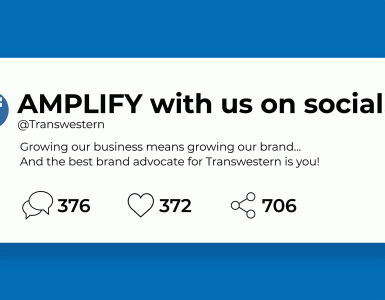Hub-and-Spoke Office Configuration Gets a Serious Look
SHRM, November 18, 2021
Employers are offering workers more flexibility in where they do their work—not only through work-from-home options but also by allowing work to be performed from satellite offices that are separate and apart from company headquarters. “Hub-and-spoke” office locations are strategically located in neighborhoods near metro areas. These spokes can play a pivotal role in retaining a company’s top employees as well as the overall staff.
Analytics Can Identify Prime Locations
Xander Walbridge and Ryan Chambers of Transwestern Real Estate Services have studied the hub-and-spoke phenomenon and devised a strategic way to geographically determine the optimal locations based on labor pockets and labor catchment. When studying labor pockets, location strategists have traditionally visualized where the target workforce lives or works, or perhaps where the density of that labor force is strongest. However, by focusing on just one “pocket” of target labor, other targets are ignored.
Labor catchment is a more refined approach that determines where labor can most efficiently be accessed. In essence, it values accessibility over density and can attract multiple pockets within a reasonable commute time. After determining where geographically an organization can optimize for target labor, a short list of potential offices can then be identified. Robust microsite-selection analysis can incorporate factors from amenities and walkability to demographics and crime statistics, driving a holistic location selection process for any organization.
HR Needs to Be in ‘The Room’
The hub-and-spoke system appeals both to employees who want shorter commutes and to cost-conscious businesses that would rather spend money on less-expensive suburban office space than pricey downtown locations.
“Our research shows that since the pandemic, there’s been much more focus on the hub-and-spoke model,” Chambers said. “Real estate, people and talent all go hand-in-hand. Talent is a huge expense, so having accessibility to the right people in place is very important. Turnover right now is as bad as it’s ever been. Decreasing commute times is important analysis for achieving a better turnover rate. Whether it’s a single office, or one with several satellite offices, it is crucial to find office locations that are near where your workers live.”
Walbridge said that when discussing office locations, having HR in the room is really beneficial: “HR is surprised when we ask for these types of employee-centric considerations, but also very excited,. ‘We think about this every day,’ they tell us.”
Chambers said it’s crucial for decision-makers to speak to the HR team to find out the wants and needs and the company’s culture to make better real estate decisions. Walbridge said hub-and-spoke enables companies of 200 or so employees “to make the strategic decisions based on, ‘These are the 50 employees who we simply cannot afford to lose.’ From that, a hub-and-spoke model can be created based on where those 50 live.”
It’s Not All or Nothing
Walbridge said choosing to go with a hub-and-spoke model is not a binary decision where everyone either works from home or everyone must be in the office.
“The spokes can accommodate different employee types in different ways,” he said. “Some workers live near the main headquarters and want to come in or use a hybrid model. Others, who may have moved out of the city to the suburbs during the pandemic, can find offices closer to home. No one wants a two-hour daily commute. At the same time, the headquarters can still serve a good purpose. It can be downsized but maintained as a location for quarterly all-staff meetings, company events or when clients come to town to meet in person.”
Chambers said that companies need to ask themselves: Where is our target labor? “We can run a geospatial employee analysis and determine where the spokes should be located based on their talent needs, and where their current employees live,” he said. “Cities such as Dallas are set up with high employment and office availability nodes, whereas Washington, D.C., has a very strong downtown with very high density of employment, but perhaps fewer nodes outside the Beltway.”
Hub-and-spoke was already in place for very large companies such as Google in the San Francisco Bay area, but now it can work for smaller companies with as few as 200 to 300 employees in one metro area, too, Walbridge added. A co-working facility, especially closer to where many people live in the outlying suburbs, has its benefits, given that it’s easy to implement and it’s easy for the company to exit because they are not stuck with a long-term lease.
Accounting for Company Culture
Anna Okerhjelm, design director at Detroit-based Pophouse, said she’s had a few discussions about the hub-and-spoke concept with clients and partners.
“We have not seen any of our current projects or clientele pursue this unique approach,” she said. “This is a distributed model that may work well for certain organizations and industries; however, as with any shift of this magnitude, it’s important to consider the cultural impact on the team. The prevailing sentiment from our clients maintains the office as a relevant investment and added value to the team and organization in that it serves as a primary destination for doses of culture, collaboration and innovation.”
A recent report from MIT Sloan Management Review suggested, “While office space is a physical representation of an organization’s people, culture and values, office space itself does not make a company. But the challenge of having multiple office spokes is ensuring that the employee experience—both in the office and culturally—feels cohesive. Companies must then deliberately define what cohesion means for them with consistent and clear interventions.”
Industrial real estate market leaps to new heights, Transwestern report finds
DC Velocity, November 17, 2021
The U.S. industrial real estate market set new records in the third quarter, posting the largest quarterly growth jump since 2008 with net absorption of 158.8 million square feet, Transwestern Real Estate Services said.
‘The
demise of the American office building is a bit overblown’ | Office space being
reimagined, reused post-pandemic
KHOU, November 10, 2021
Take a tour of renovated office space and an old office building now used as a boutique hotel.
Transwestern Development Co. Breaks Ground on Tempe Apartments
Multi-Housing News, November 10, 2021
Transwestern Development Co. (TDC) has launched construction on a new multifamily development at a major gateway into Novus Innovation Corridor in Tempe, Ariz.
In the business of buildings, net zero becomes a towering target
GreenBiz, November 1, 2021
The COVID-19 pandemic reset the business of commercial real estate, with repercussions still coming into focus. Tens of millions of U.S. professionals stopped commuting to work in spring of 2020, laboring from home for months or longer.
























